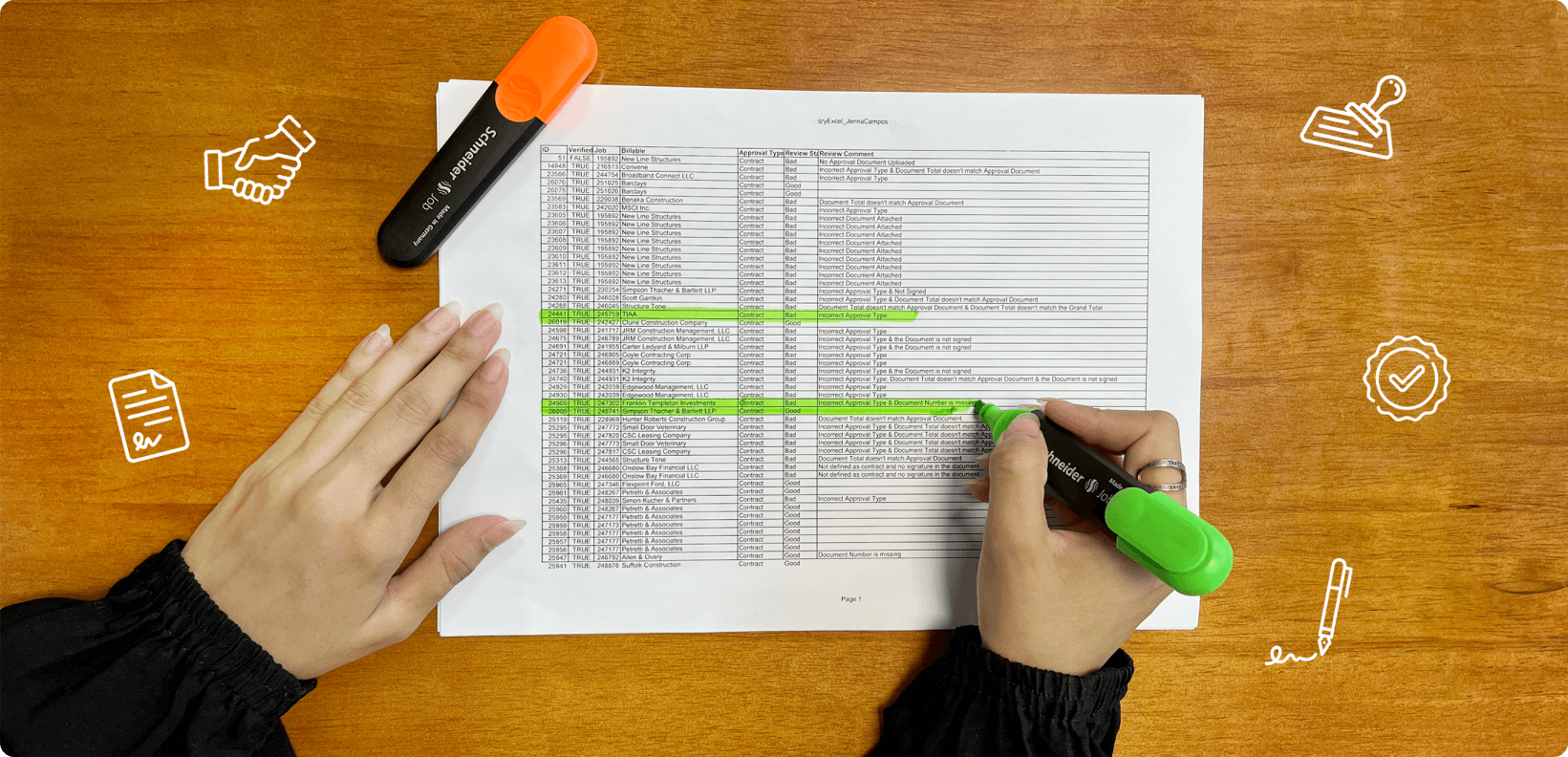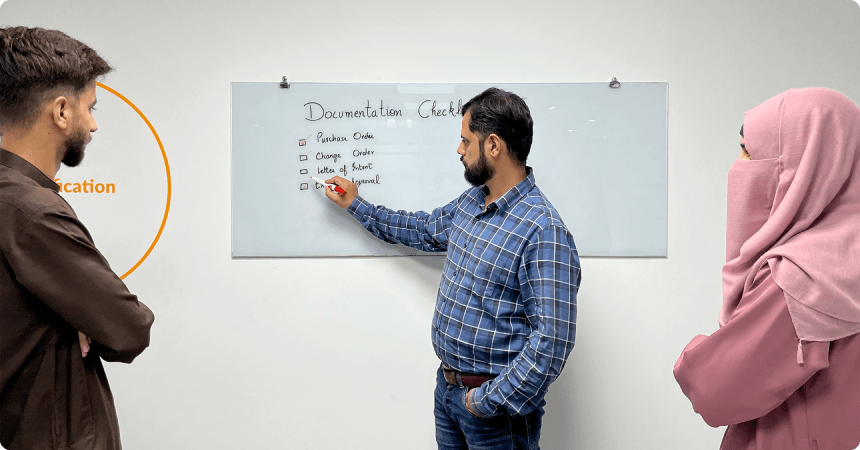Engineering Documentation
The Role of Documentation in Engineering Projects
LantroTech Marketing
August 30, 2024

Documentation refers to the organized collection of written materials, instructions, records, and references that provide essential information about a project, system, process, or product. In various fields, especially engineering, documentation is critical for communication, planning, execution, and maintenance. Documentation is created to ensure that everyone involved in a project or using a product has access to the necessary information. It clarifies processes, outlines requirements, and provides guidance for future actions.
At LantroTech, we take project document management very seriously, as it is crucial in ensuring the success and efficiency of our projects. Effective document management lets us communicate clearly among our team members, clients, and stakeholders, ensuring everyone is aligned and informed throughout the project’s lifecycle. It also helps us keep meticulous records of every decision, change, and progress milestone, enabling us to manage projects more efficiently and avoid potential issues. Before we explore the role of documentation in engineering projects, let us first examine the four main types of documentation in this blog.
Types of Documentation
When working on any project, the importance of thorough documentation cannot be overstated. Documentation serves as a backbone for clear communication, project management, user guidance, and regulatory compliance. Depending on the nature of the work, different types of documentation come into play.
Technical Documentation
Includes detailed information about systems or products’ design, specifications, and functioning. Examples are engineering drawings, schematics, and technical manuals.
Project Documentation
Covers the planning, execution, and management aspects of a project. Examples include project plans, timelines, budgets, and progress reports.
User Documentation
Designed for end-users to help them understand how to use a product or system. Examples are user manuals, installation guides, and troubleshooting tips.
Compliance Documentation
Documents that ensure a project or product meets industry standards, regulations, and legal requirements. Examples include safety guidelines, certifications, and audit reports.

The Role of Documentation in Engineering Projects
In the fast-paced world of engineering, the success of a project doesn’t solely depend on the technical prowess of the team; it also hinges on the quality and thoroughness of the documentation. At LantroTech, documentation is the backbone that supports every phase of an engineering project, from the initial planning stages to the long-term maintenance of the final product. Now, let us explore why documentation is essential in engineering projects, how it contributes to each phase, and the best practices for creating adequate documentation that ensures project success and sustainability. There are three main phases in engineering documentation projects.
1. Planning Phase
The planning phase is the most critical stage in engineering project documentation. During this phase, documentation is key in defining project goals, deliverables, and scope, establishing a clear and structured path forward. It is also essential for identifying potential risks and outlining mitigation strategies, ensuring the project is prepared for any challenges. Additionally, documenting resource needs during this phase is vital for accurate budgeting and scheduling, helping to allocate resources effectively and avoid delays or cost overruns.
2. Execution Phase
The execution phase is crucial for keeping the project on track, where documentation plays a pivotal role. Detailed design and technical specifications are essential for translating ideas into actionable plans, ensuring the project adheres to the intended design and functionality. Effective documentation is also critical for maintaining clear communication and collaboration among stakeholders, keeping everyone aligned and informed throughout the project. Furthermore, documentation supports project management by providing a comprehensive record of decisions, changes, and milestones. This enables the project engineering teams to track progress and make informed adjustments as needed in the status report.

3. Maintenance Phase
In the maintenance phase, documentation is key to ensuring the longevity and compliance of the project. Clear, user-friendly operational manuals and guides are necessary to support ongoing operation and troubleshooting, providing users access control and maintenance teams with the knowledge and quality assurance they need to keep systems running smoothly. Maintenance logs are essential in tracking project status activities and identifying recurring issues, allowing for proactive maintenance and reducing downtime for process documents. Additionally, documentation is crucial for meeting industry standards and legal requirements, ensuring the project schedule remains compliant over time, and avoiding potential regulatory issues.
Best Practices for Effective Engineering Documentation
Effective engineering documentation relies on three key practices: clarity, consistency, and accessibility. Let us explore the best practices used for effective engineering documentation:
1. Clarity and Conciseness
Clear and concise documentation is essential for effective communication in any engineering project. Use simple, direct language and avoid unnecessary jargon to make the documents easy to understand. One should do documentation for project ease, so the information should be logically organized. To design document, use headings, bullet points, and visual aids where appropriate to enhance readability. This approach minimizes the risk of misinterpretation and ensures that all stakeholders can quickly grasp key information.
2. Consistency and Version Control
Maintaining consistency across all documents is crucial for accuracy and coherence. Use standardized templates, formats, and terminology to ensure uniformity throughout the documentation. Implement robust version control strategies to manage updates effectively, track changes, and prevent confusion over which document version is the most current. This practice ensures that everyone is working with the latest information, reducing the chances of errors and discrepancies.

3. Accessibility
Ensuring that documentation is easily accessible to all relevant stakeholders is vital for a project’s smooth operation and success. Store documents in a centralized, secure location with appropriate permissions to ensure only authorized personnel can access or modify them. Leverage digital tools and platforms that facilitate easy searching, sharing, and retrieval of documents during and after the project. Accessible documentation ensures that critical information is always within reach, supporting informed decision-making and efficient project management.
Conclusion
Good documentation is not just a formality; it’s a critical tool that can determine the success or failure of an engineering project. So the lessons learned from the above project phases are that by recognizing and leveraging the role of documentation at every stage, from planning and execution to maintenance, engineers and project managers can ensure that their projects are successful in the short term and sustainable and compliant in the long run. Well-crafted documentation enhances communication, reduces risks, and provides a valuable resource for future reference in the project charter.
At LantroTech, we understand the profound impact of precise and comprehensive documentation, particularly in the realm of electrical engineering and design. Our commitment to excellence is reflected in our systematic approach to capturing and communicating every detail, from schematic diagrams to operation manuals. By integrating advanced tools and technologies, we turn documentation into a strategic asset that drives project success. To learn more about how LantroTech can elevate your documentation standards, reach out to us by completing the form below.